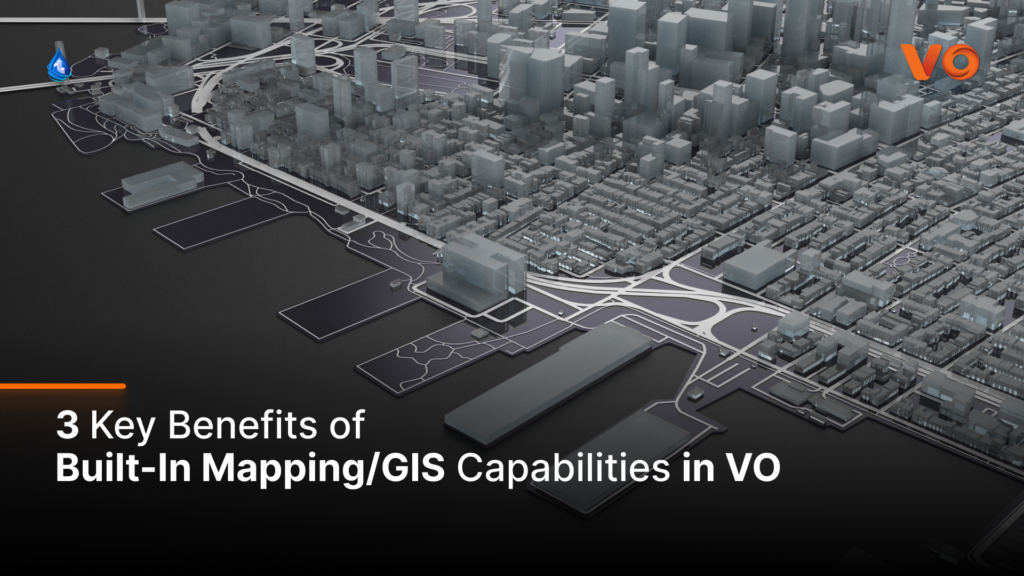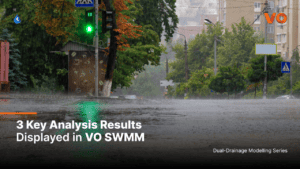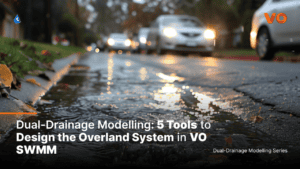
VO OTTHYMO and VO SWMM integrate GIS tools to leverage spatial data and streamline model parameterization and calibration. These built-in tools allow you to add layers to maps with expanded format support, save and load Symbol designs for future use, export layers in various formats, and perform spatial analysis with ease.
GIS Tools:
Versatile Map Layer Management
VO’s GIS tools enable the integration of different map layers, expanding the versatility of your model. Adding and managing layers makes data visualization and analysis more effective.
Spatial Analysis with “Create Polygon Layer”
With the powerful “Create Polygon Layer” tool, you can draw polygons directly on the map, allowing you to define specific areas of interest for further analysis and visualization. This feature enhances your spatial analysis capabilities, enabling better decision-making in hydrologic modelling projects.
Urban and Rural DEM Processing
VO provides specialized tools for Urban and Rural DEM processing. The “Flow Path” tool is designed for working with high-resolution DEM files in urban areas, while the Generate Catchments under Rural DEM Processing assists with channel network extraction, basin delineation, and vectorization in rural settings.
Distributed Rainfall Modelling Technique (DRMT)
To address rainfall data challenges, VO offers the innovative DRMT. It utilizes interpolation on multiple rain gauges surrounding a site of interest to create virtual rain gauges at the centroid of each catchment’s tributary area. This approach ensures an accurate representation of rainfall over a relatively large drainage area, supporting precise flow and level data interpretation.
3 Benefits of GIS and Mapping Capabilities:
Application in Simulation Modelling
The GIS capabilities in VO extend beyond data visualization, making a significant impact on hydrologic modelling and analysis:
1. Optimized Rainfall Data Usage:
With the DRMT, VO enables you to make the best use of available rainfall data. By creating virtual rain gauges and interpolating values, you can overcome limitations caused by using non-representative rainfall data, leading to more accurate and reliable stormwater management analyses.
2. Focused Urban DEM Processing:
VO’s “Flow Path” tool provides a powerful solution for working with high-resolution DEMs in urban areas. By generating subcatchments and leveraging major Junctions, delineation Junctions, and DEM data, you can efficiently model stormwater behavior in city environments.
3. Precise Parameter Calculation:
VO streamlines parameter calculation with tools like “Calculate CN” and “Calculate Area Weighted.” These tools automate the process of determining crucial parameters, such as Curve Number (CN), imperviousness (TIMP and XIMP), and initial abstraction. The result is improved accuracy and efficiency in hydrologic modelling studies.
Conclusion
VO’s integrated mapping and GIS capabilities offer significant advantages for hydrologic modelling and water resource management. These benefits include optimized rainfall data utilization through the Distributed Rainfall Modelling Technique, focused urban DEM processing for accurate urban stormwater modelling, and precise parameter calculation automation. These capabilities go beyond data visualization, enhancing modelling accuracy and efficiency. VO empowers users to make informed decisions and optimize their simulation modelling efforts in modern water resource management.
Experience the simplicity and power of VO as you create accurate models.
To request a VO OTTHYMO license, click HERE





